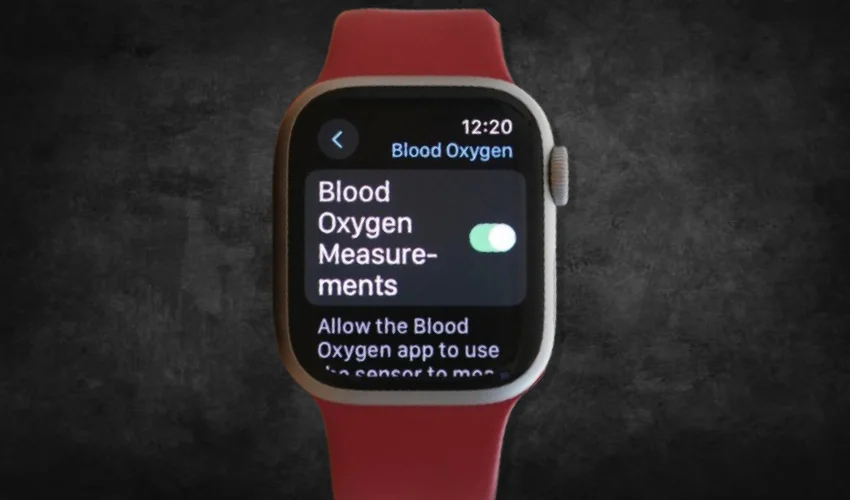
In the ever-evolving world of technology and law, even the most established features can undergo significant changes. The latest development comes from Apple, which has released the seventh beta of its upcoming apple iOS 26 beta 7 with a crucial redesign specifically for users in the United States. The feature in question? The Blood Oxygen app on the Apple Watch. This change isn’t driven by a new technological breakthrough but is the direct result of a complex and ongoing legal patent dispute with medical technology company Masimo. Understanding this shift is important for current and potential Apple Watch users, as it highlights the intricate balance between innovation, intellectual property, and user experience.
Section 1: What’s Changing in the iOS 26 Beta 7 Blood Oxygen App?
The core of the change in apple iOS 26 beta 7 is a fundamental redesign of how the Blood Oxygen app functions and presents information. Previously, the app was a fully functional tool that allowed users to take on-demand readings of their blood oxygen saturation (SpO2), view historical trends in the Health app, and receive background measurements during sleep or periods of inactivity. This data provided valuable insights for general wellness and fitness tracking.
In the new U.S.-specific version found in the latest beta, the app has been transformed. Based on reports from testers, the redesigned app no longer displays a numerical percentage—the key metric of a blood oxygen reading. Instead, it merely indicates that a measurement “was successfully provided.” The app essentially confirms that the hardware’s sensors are active and working but withholds the specific SpO2 data from the user. This is a deliberate software limitation applied only to devices sold in the U.S. to comply with a legal ruling from the International Trade Commission (ITC), which found that the light-based sensors in Apple Watches Series 6 and later infringe on patents held by Masimo.
Section 2: Why This Change Matters and Who It Affects
The importance of this redesign extends beyond a simple software tweak; it touches on legal, business, and user-centric issues.
- Legal Compliance and Business Continuity: For Apple, this change is a strategic maneuver to avoid a repeat of the sales ban that briefly halted online sales of its latest Watch models in December 2023. By deploying a software update that disables the contested feature, Apple can continue importing and selling its watches in the U.S. market without further legal impediment (at least for now), protecting billions in revenue.
- The Precedent of Software-Based Solutions: This situation demonstrates how software updates can be used as a tool to navigate hardware-related legal challenges. Instead of recalling devices or physically altering hardware in already-sold watches, Apple is using its control over iOS and watchOS to implement a geographically targeted “fix.”
- Impact on Users: For the average U.S. user, the impact is direct. Anyone who purchased an Apple Watch for its blood oxygen monitoring capabilities will lose access to that specific data point. This affects users who track this metric for general wellness awareness, athletes monitoring their recovery, or individuals who found peace of mind in having the data available. It’s a tangible reduction in the product’s advertised functionality. International users and those with older watch models without the blood oxygen sensor are unaffected.
Section 3: What Current and Prospective U.S. Users Should Do
If you are an Apple Watch user in the United States, here are the actionable steps you can take based on your situation:
- For Current Owners (Series 6 and Later): When the final public version of iOS 26 and watchOS 11 are released this fall, you will be prompted to update. Installing this update will automatically reconfigure your Blood Oxygen app to the new, data-less version. You cannot bypass this update if you wish to keep your watch’s software current with security and feature patches.
- Consider Your Update Timeline: If you heavily rely on the blood oxygen data, you could choose to delay installing the major OS update once it’s released. However, this is only a temporary solution, as future critical security updates will likely require the latest OS version, and delaying leaves your device vulnerable.
- For Prospective Buyers: Be aware that any new Apple Watch Series 6 or later purchased in the U.S. after the software update is released will not have functioning blood oxygen reading capabilities. Evaluate your purchase decision based on the watch’s other features like heart rate monitoring, ECG, sleep tracking, and fitness metrics.
- Explore Data Alternatives: If blood oxygen monitoring is a non-negotiable feature for you, research dedicated FDA-cleared pulse oximeters or other wearable devices from companies not involved in this patent dispute. These devices are designed specifically for medical-grade SpO2 monitoring.
Section 4: Common Misconceptions About the Redesign
It’s easy to misunderstand the nuances of this situation. Let’s clarify some common misconceptions:
- Misconception 1: “The hardware is being removed or disabled.” The hardware remains perfectly intact. The sensors in your Apple Watch are still physically present and functional. The change is purely a software limitation that prevents the numerical result from being displayed to you.
- Misconception 2: “This is a permanent, global change.” This redesign is currently specific to the United States due to the ITC’s jurisdiction. Apple Watches sold in other countries continue to have full access to the blood oxygen feature. Furthermore, the legal battle is ongoing (with Masimo even suing U.S. Customs for allowing the redesigned watches to be imported), so the final outcome could still change in the future through a settlement or new ruling.
- Misconception 3: “This update will break my watch or remove other features.” The apple iOS 26 beta 7 update and its eventual public release are focused solely on modifying the Blood Oxygen app. All other health and fitness features—ECG, heart rate notifications, sleep staging, workout tracking—will continue to operate exactly as they do now.
- Misconception 4: “Apple lost the lawsuit.” The patent dispute is a multi-front war. Apple lost a specific ITC ruling that led to the import ban, which this software update is designed to circumvent. Separate jury trials and other legal actions are still playing out, meaning the overall conflict is far from over.
Conclusion
The redesign of the Blood Oxygen app in apple iOS 26 beta 7 is a landmark example of a legal dispute directly shaping a consumer product’s functionality. For U.S. customers, it means the loss of a popular health-tracking feature despite the underlying hardware remaining in place. This move allows Apple to maintain its watch sales while it continues to fight its legal battles in court. For users, the key takeaway is to stay informed, manage expectations for new purchases, and understand that the digital features we often take for granted can be altered by forces far beyond a simple software update. As the fall release of iOS 26 approaches, keep an eye on official Apple communications for the final details on this significant change.


